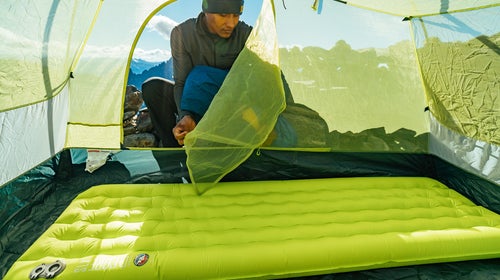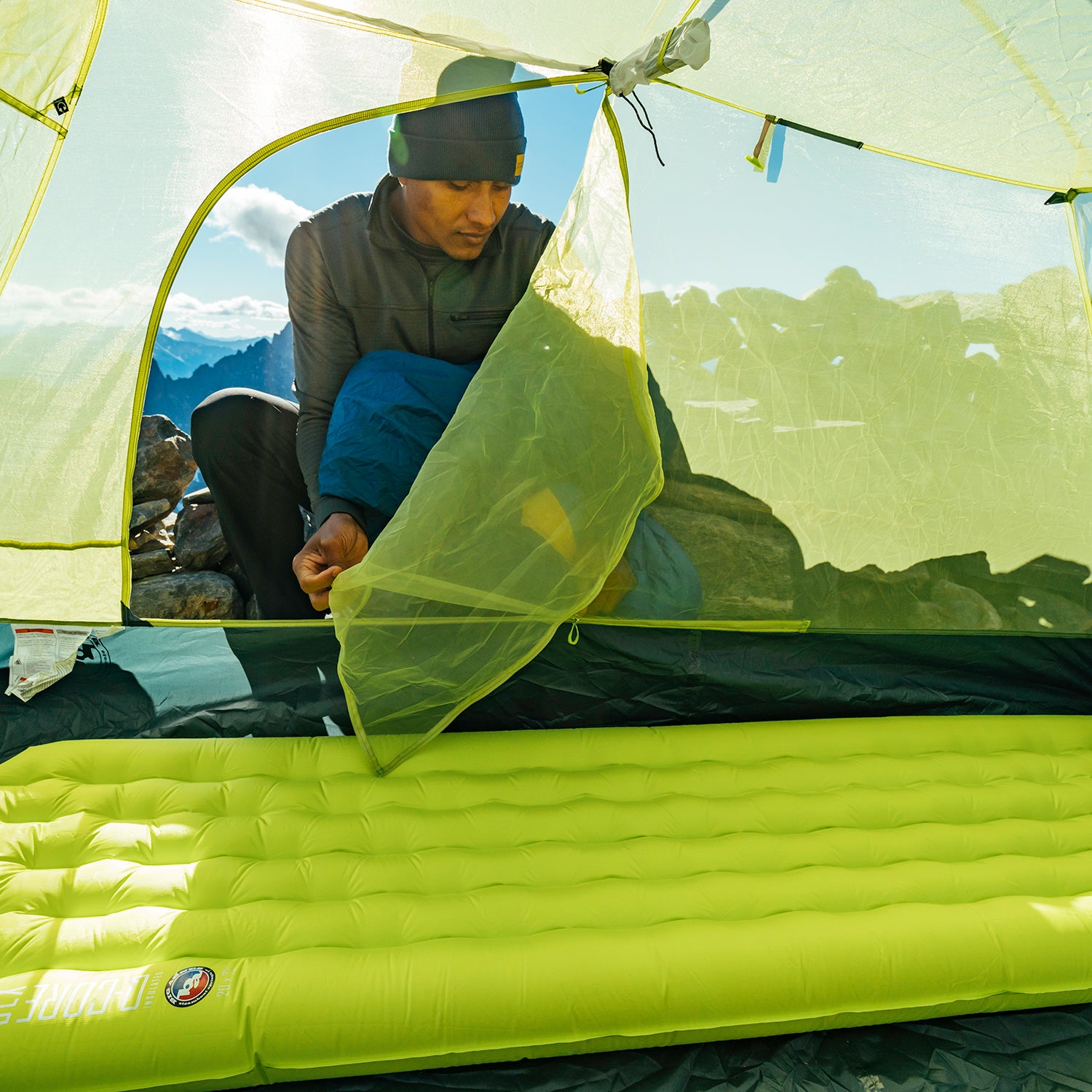Deep down, I have always believed that attempting to fix a leaking sleeping pad was a fool’s errand. I’ve plunged several limp inflatable mats into my bathtub in search of streams of tiny bubbles, slapped synthetic patches over the holes, and yet still woken up in the middle of the night on my next trip with a rock jabbing me in the kidney.
But against my lackluster record stands that of Annica Lassesen, a warranty and repair specialist at Exped USA, who has patched��an average of 500��mats per year during her three years at the company. Her most stunning successes include a mat with 87 total punctures��and one with a 17-inch tear. With roughly 1,500 mats under her belt, Lassesen knows her stuff,��and says she’s “all about trying to make resources available to people”��so they can fix mats themselves.
We called her up and got her dos and don’ts for those who want to try their hand at sleeping-pad repair—turning this skeptic into a glue believer.
Prevention
Do: Keep Pets Away
“A��good chunk of my repairs lately are from animals. With the record of 87 punctures—we knew a cat did that,” Lassesen says. “Cats and dogs very much enjoy our mats.” It may be cute to see your beloved furry friend snuggle up on your sleeping pad, but pets’ sharp claws pose a significant hazard to inflatable mats. Store them out of reach.
Don’t: Strap It to the �����ԹϺ��� of Your Pack
We’ve all done it (or at least considered it): lashing our bulky sleeping pad to the outside of our pack. It may seem like space-saving common sense, but Lassesen warns against this strategy. “Really, it should be protected on the inside,” she��says. “Some punctures occur while the mat is in storage mode, so the placement of a sleeping mat while in a backpack is very important.” Keep��it separated from sharp tools and utensils.
Leak Finding
Do: Spray with Soapy Water
The first and��often hardest step is locating the puncture, Lassesen says. She recommends inflating your mat fully before spraying it with a mixture of soap and water. Then apply pressure to the mat and look for bubbles. She also notes that if the mat is wet, and there’s enough pressure, “you can actually hear a bit of a whistle sound from where the air is coming out.”
Don’t: Hesitate to Call in a Professional
There’s a reason why Lassesen considers this the most challenging��point��of the��process. “If somebody can find the puncture, then that’s a huge accomplishment,” she says. Holes that cause your pad to completely deflate overnight can be tiny and nearly impossible to spot, even��with��the usual at-home tricks. At the Exped lab, she uses a hydraulic dunk tank that can immerse the entire pad under water and put enough pressure on it to clearly show where every single leak is, no matter how small. Also consider sending your mat to a professional if the internal foam is damaged��or if you’re just feeling out of your depth. Exped and many other companies offer free repair programs—take advantage of them.
Repair
Do: Use Glue
This is where I and so many others went wrong. The little patch that comes with your pad’s repair kit? It won’t actually fix a leak.��“Patches are more intended to be a protective, cosmetic��layer. Some are adhesive, some are not, but the patch itself isn’t doing any of the work,” Lassesen says. While an adhesive patch may stave off a leak for one night if you’re out in the backcountry, the only permanent solution for a puncture or tear is a glue that will bond with the fabric��to create an airtight seal. In fact, no patch is necessary at all. “Glue is key,” Lassesen says.��For fabric-covered pads, she��recommends ($7) for short-term field fixes��or the brand’s ($8) for long-term ones, which should also work on rubberized mats. (The latter can be layered over the former to reinforce field repairs when you get home.)
Don’t: Get Creative
This is one place duct tape won’t help. Besides being unable to create an airtight seal, the adhesive on the tape can leave a residue on the fabric, making it harder to patch in the future. “Stick with the right products, and don’t experiment,” Lassesen says. Tent-repair kits and down-jacket patches are also no-go’s.
Other Advice
Do: Test Your Pad
Inflate your repaired��pad at home, and weigh it down with books (or sleep on it) before heading out into the backcountry. Even if you successfully took care of one leak, there could be more, and you may not know until it’s too late.
Do: Reinforce Large��Tears
“If there’s a larger hole or tear, having some kind of backing on the underside of the repair is super helpful,” Lassesen says. “Sometimes people will just glue the top of their mats, but the glue might be able to permeate through the hole area. Then you have something that’s glued the top and bottom together, and you end up ruining the mat.” She recommends ($5) or medical tape.
Do: Know When to Quit
Typically, Lassesen says, tears through welds and valve housings cannot be permanently fixed. If your mat breaks in those spots, it’s probably best to just get a new one. Here are a few we recommend.


